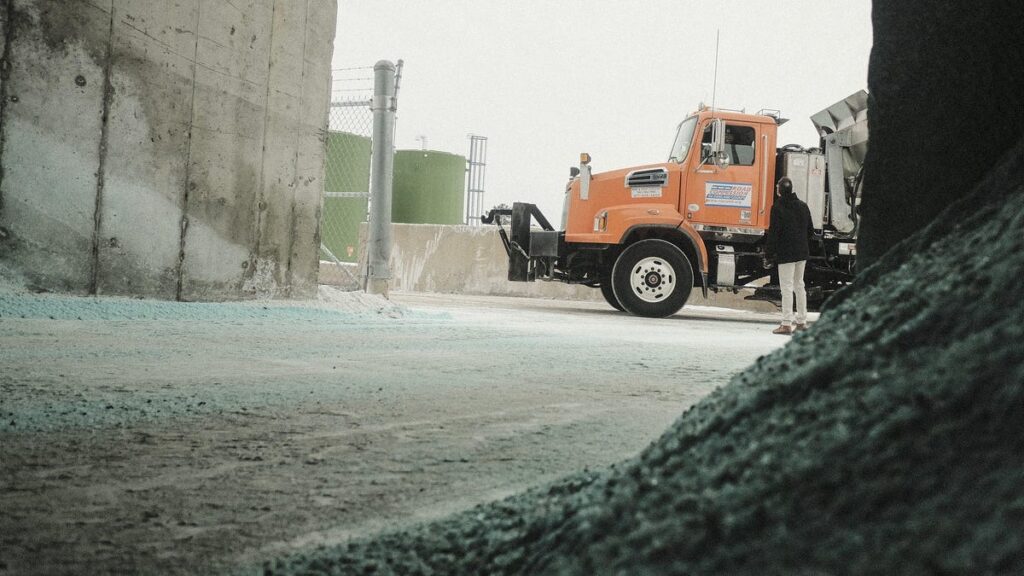Road Salt Is Turning Part of the Mississippi River Into a Toxic Salty Mess

Photo: Matthew Hatche (Getty Images)
The heavy use of road salt to de-ice streets and highways in the Upper Midwest of the U.S. has raised the chloride levels of the Upper Mississippi River by more than one-third. According to Undark, a study from the Upper Mississippi River Basin Association found that liberal use of road salt in the notoriously snowy region is responsible for the river basin’s chloride levels going up by 35 percent from 1989 to 2018, which is a rate of salinization of one to four percent per year.
Scientists are calling the increase unsustainable, and they warn that the Upper Mississippi River could eventually see chronic toxicity levels that will affect bodies of freshwater throughout Minnesota, Illinois, Wisconsin and beyond, as the salty water flows from the Mississippi River down to the Gulf of Mexico.
The chloride will make it down there, as Undark reports, because “unlike other pollutants, chloride doesn’t break down in water over time. In other words, once it’s in, there’s no getting it out.”
Photo: Upper Mississippi River Basin Association
And while the Upper Mississippi hasn’t yet been polluted by the road salt to chronically toxic levels, the high levels of chloride are already threatening smaller rivers and streams connected to the Mississippi, which can’t flush the same volume of water as the big river — famously known as one of the dividing lines of the U.S.:
Both the EPA and state environmental agencies set limits for when chloride becomes toxic to aquatic life. In Wisconsin, for example, 395 milligrams per liter of chloride in a water body for days at a time is considered chronically impaired, while 757 milligrams per liter, which is instantly toxic to fish, is considered acutely impaired.
Though the Mississippi River is under the limit, many smaller tributaries are not. In Minnesota, 50 lakes and streams are considered impaired by chloride, and another 75 have chloride levels near the standard, according to the state’s pollution control agency. In Wisconsin, 51 rivers and one lake are chronically impaired by chloride, DNR data show — most in the southeast part of the state.
G/O Media may get a commission

Up to $100 credit
Samsung Reserve
Reserve the next gen Samsung device
All you need to do is sign up with your email and boom: credit for your preorder on a new Samsung device.
Go read the full report because it details the effects this buildup of salt in the Mississippi could produce after nearly three decades. These include higher electric current in the water, which kills freshwater aquatic plants and animals, and can lead to harmful algal blooms as a result of zooplankton dying off.
Higher levels of chloride can harm people, too, as the salt seeps into the groundwater that municipalities in Minnesota and Wisconsin rely on as a source of drinking water. And the chloride poses risks to the infrastructure since it eats away at lead and copper drinking water lines, leading to contamination.
The findings have prompted public safety agencies and other departments in some states to change their approach to de-icing roads in the winter. Brining is becoming more popular, whereby salt is mixed with water resulting in less salt being used. Beet juice is another alternative that’s showing promise.
Simply using less road salt is a good solution in theory, but it takes more work and to calculate the right amount of salt needed for a given snowfall. It’s a lot more involved than having someone throw down salt indiscriminately, or just dumping salt on roads with trucks. But the problem has been some thirty years in the making, so it’s going to take coordination and planning, (and tax dollars) to stop the salt from ending up in the Mississippi. The report concludes it’ll come down to Upper Midwest states doing the right thing, versus the easy thing.
Photo: Jim Watson (Getty Images)



